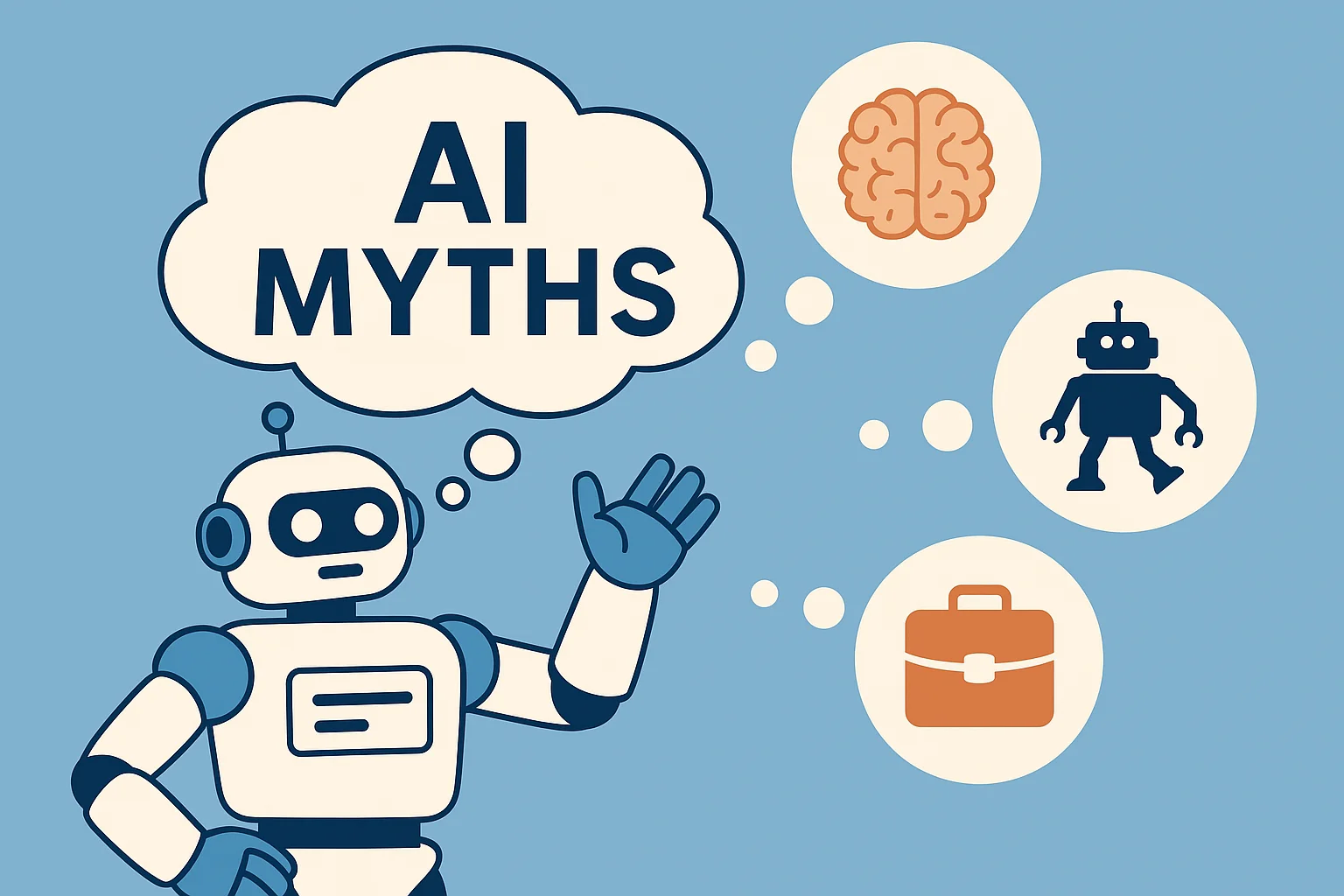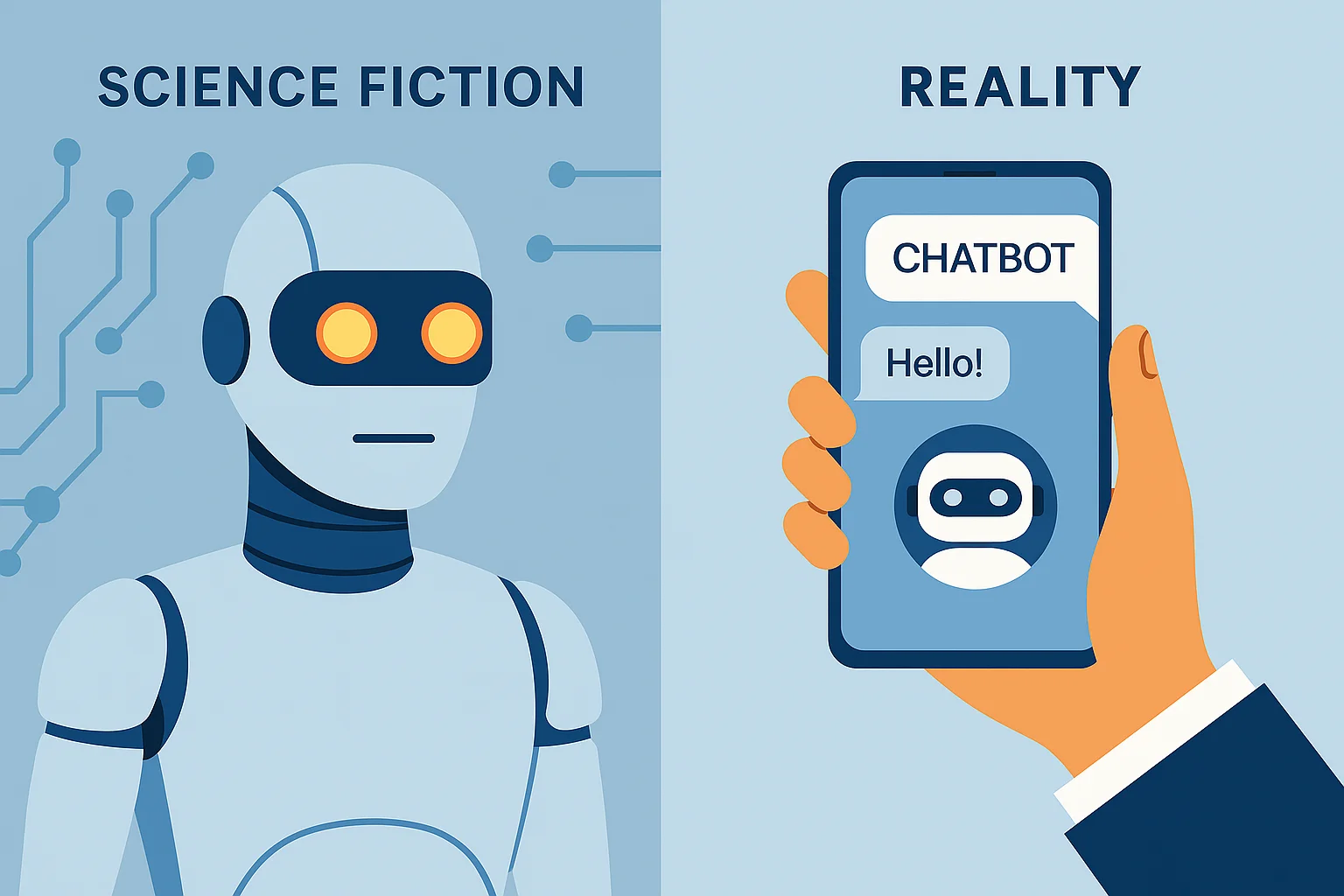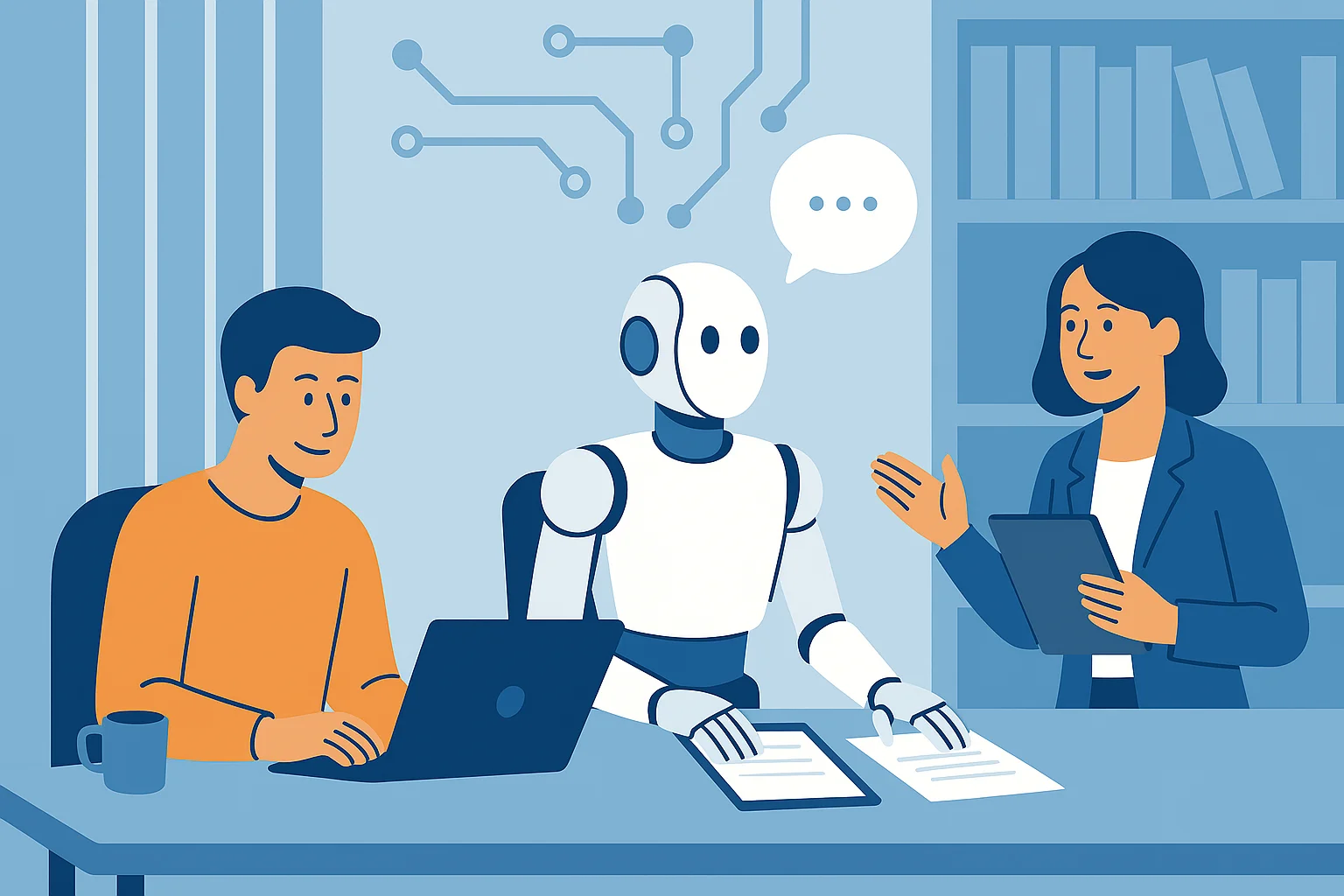7 Common Myths About AI — Debunking Misconceptions About Artificial Intelligence

From Hollywood-style sentience to fears of job-stealing robots, AI has inspired countless myths. In this article, we break down the most persistent misconceptions about artificial intelligence — and separate fact from fiction.
1. AI Thinks Just Like a Human
Many assume that AI mimics human thinking. But today's AI — including tools like ChatGPT, Claude, and Gemini — operates through mathematical patterns, not consciousness. It predicts text, makes classifications, or identifies images using statistical relationships within massive training datasets.
AI lacks consciousness, emotion, self-awareness, or any innate goals. It doesn’t form beliefs, nor does it “know” what it’s doing. It cannot reflect on its own behavior or reinterpret its environment. Comparing it to human cognition leads to major misunderstandings about its strengths and limitations.
Myth Busted: AI simulates reasoning but doesn’t actually think.
2. AI Will Soon Become Sentient

Popular media often portrays AI as one step away from gaining consciousness. While these stories are compelling, they’re far removed from reality. No current AI system has a sense of self, an internal world, or emotions. They process input, generate output, and nothing more.
Even the most sophisticated models lack persistence across sessions — meaning they don't remember users unless explicitly designed to. They also can't form goals or desires. AI researchers agree that sentient AI would require breakthroughs in neuroscience, philosophy, and engineering that remain decades (if not centuries) away.
Myth Busted: Sentience is science fiction — not today's reality.
3. AI Learns and Improves on Its Own
Some believe AI is like a self-learning robot from a movie. In truth, nearly all machine learning systems are created, guided, trained, evaluated, and fine-tuned by humans. Even "unsupervised learning" is designed and constrained by human goals and architecture.
When an AI model improves, it usually means engineers gave it more data, better training signals, or fine-tuned it for a specific purpose. There is no curiosity, no scientific method, no experimentation. It’s mathematical optimization — not learning in the human sense.
Myth Busted: AI doesn't learn on its own — it learns what we train it to.
4. AI Is Always Objective
People often think of machines as neutral. But AI systems inherit the biases present in their data. If a training dataset underrepresents women, people of color, or certain languages, the AI model might generate unfair or inaccurate results.
Bias can appear in hiring algorithms, language generation, facial recognition, and even medical recommendations. Responsible AI requires active mitigation of these risks — not blind faith in objectivity.
Myth Busted: AI reflects the data it's trained on — biases included.
5. AI Will Replace All Human Jobs

This is a widespread fear — and while automation is real, it’s unlikely that AI will wipe out every job. In practice, AI is automating tasks rather than roles. For example, a marketing analyst might use AI to draft reports, but still applies human judgment to refine them.
According to studies from the World Economic Forum and McKinsey, AI will create new roles even as it displaces others. Demand is already growing for AI auditors, data curators, prompt engineers, and ethicists. Just like the internet transformed — but didn’t destroy — jobs, AI will likely reshape rather than erase employment.
Myth Busted: AI will change work — not eliminate it.
6. More Data Automatically Makes AI Better
While data is the fuel of machine learning, simply adding more isn't always beneficial. AI models need clean, well-labeled, balanced datasets. Training on poor-quality or unbalanced data can actually harm performance or reinforce harmful patterns.
Recent advances also show that smaller, well-tuned models can rival or outperform massive ones. Techniques like transfer learning, few-shot-learning, and reinforcement learning allow models to do more with less — especially when fine-tuned for specific use cases.
Myth Busted: Data quality and design matter more than quantity alone.
7. AI Is Too Complex for Non-Experts
It’s true that building AI models requires technical skill — but understanding how they work doesn’t. Concepts like neural networks, pattern recognition, and training data can be explained clearly. Knowing the basics allows everyday users, educators, and policymakers to make smarter decisions about how AI is used.
Transparency is key to trustworthy AI. When AI is seen as a black box, misuse and misunderstanding are more likely. Encouraging broad AI literacy ensures more equitable and ethical deployment of the technology.
Myth Busted: Anyone can understand AI — with the right explanations.
Conclusion
AI is one of the most powerful technologies of our time — but it’s surrounded by hype and fear. By separating myth from fact, we become better equipped to use it wisely. AI doesn’t think, feel, or plan. But it can assist, automate, and augment in ways that are meaningful — if we guide it responsibly.
Understanding what AI is not is just as important as understanding what it is. Busting these myths opens the door for better conversations, smarter policies, and more realistic expectations.